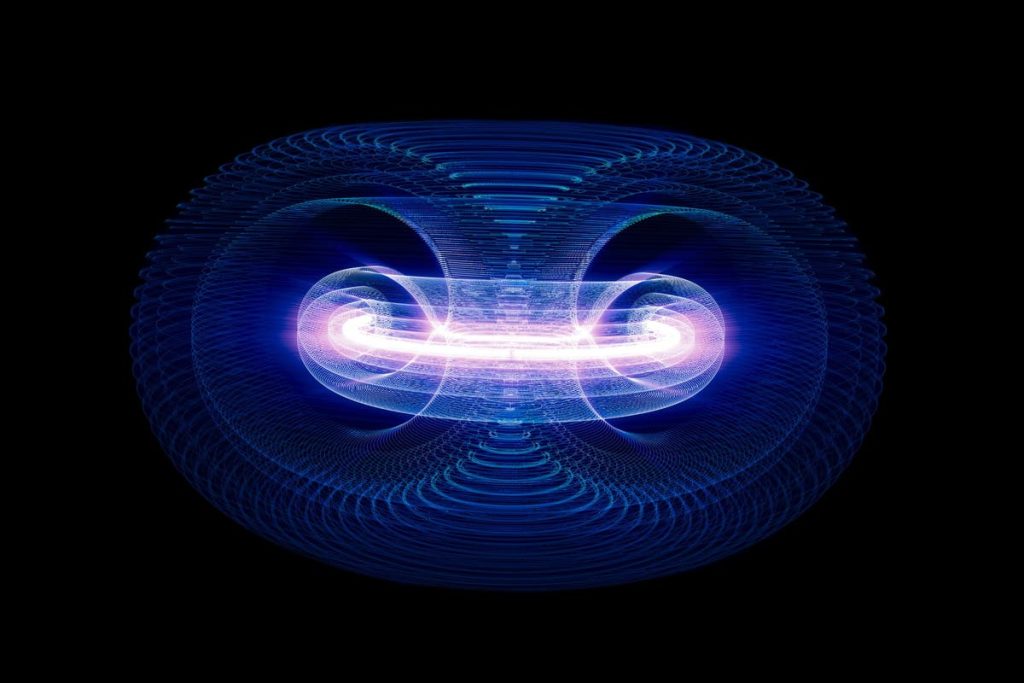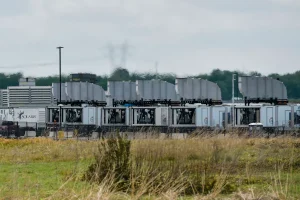AI Breakthrough Paves the Way for Limitless Clean Energy

Scientists have made a groundbreaking discovery in nuclear fusion technology with the help of artificial intelligence (AI). This advance could pave the way for near-limitless clean energy. Researchers at Princeton University have harnessed AI to predict and prevent plasma instabilities during fusion reactions. This achievement may address a significant challenge in making nuclear fusion a feasible energy source.
Unlike the process of nuclear fission, which splits atoms, nuclear fusion involves combining atoms to release energy, mimicking the reactions that power the Sun. The AI model developed by the researchers can anticipate and correct plasma instabilities before they occur, enabling real-time adjustments to maintain a stable reaction. This innovative approach brings us one step closer to achieving practical nuclear fusion energy.
Revolutionizing Energy Production
Scientists have made a major breakthrough in nuclear fusion technology, which could lead to near-limitless clean energy. Researchers at Princeton University used artificial intelligence (AI) to predict and prevent plasma instabilities during fusion reactions. This innovation may overcome one of the biggest challenges in making nuclear fusion a viable energy source.
Nuclear fusion is often described as the ‘holy grail’ of clean energy. Unlike nuclear fission, which splits atoms apart, fusion combines them to release energy, mimicking the processes that power the Sun. The new AI model developed by the researchers can recognize and address plasma instabilities 300 milliseconds before they occur, allowing for real-time adjustments to maintain a stable reaction.
The Science of Nuclear Fusion
Nuclear fusion has the potential to generate vast amounts of energy without the downsides of fossil fuels or hazardous waste. However, creating the conditions necessary for fusion to occur on Earth has proven immensely difficult. Plasma, a hot, ionized state of matter, must be controlled to sustain the fusion reactions.
In 2022, the Lawrence Livermore National Laboratory in California achieved the first-ever net energy gain from nuclear fusion. Although the energy produced was minimal, it represented a significant milestone. The latest AI advancement builds on this by ensuring that instabilities in the plasma can be controlled in real time.
AI’s Role in Fusion Research
The team at Princeton developed an AI model that learns from past experiments rather than relying solely on physics-based models. This approach allows the AI to develop control policies that support stable, high-powered plasma regimes.
“By learning from past experiments, rather than incorporating information from physics-based models, the AI could develop a final control policy that supported a stable, high-powered plasma regime in real time, at a real reactor,” said Egemen Kolemen, a physicist at the Princeton Plasma Physics Laboratory.
The AI’s ability to predict and prevent instabilities ahead of time marks a departure from current methods. Traditional approaches often involve waiting for instabilities to occur and then taking corrective action. Co-author SanKyeun Kim noted, “We no longer have to wait for the instabilities to occur and then take quick corrective action before the plasma becomes disrupted.”
Real-World Implications
The implications of this breakthrough are far-reaching. If nuclear fusion can be harnessed effectively, it could provide a sustainable and virtually limitless energy source, reducing our reliance on fossil fuels. This would have a profound impact on global energy markets and environmental policies.
The ability to predict and control plasma instabilities in real-time brings us closer to the dream of grid-scale nuclear fusion energy. This milestone in nuclear fusion research is a step forward, but many challenges remain before it can be implemented on a large scale.
Researchers are optimistic that this AI breakthrough will pave the way for further advancements in the field, ultimately bringing us closer to achieving practical nuclear fusion energy.
Future Prospects of Nuclear Fusion
The potential of nuclear fusion as a clean energy source is immense. However, the technology is still in its infancy, and significant hurdles must be overcome before it can be deployed widely. The recent AI-driven advancements are encouraging, but they represent just one piece of the puzzle.
Achieving grid-scale nuclear fusion energy will require ongoing research and collaboration among scientists, engineers, and policymakers worldwide. The focus will likely be on improving the efficiency and stability of fusion reactions while addressing the technical challenges that remain.
As we look to the future, the promise of nuclear fusion offers hope for a sustainable energy solution. Despite the obstacles, the progress made so far is a testament to the potential of human ingenuity and technological innovation.
Challenges Ahead
While the AI breakthrough is a significant step forward, many challenges remain. Controlling plasma is a complex task, and the technology needed to sustain long-term fusion reactions is still under development.
Researchers must also address the economic and regulatory hurdles associated with nuclear fusion. Building and maintaining fusion reactors is an expensive endeavor, and stringent safety regulations must be met to ensure the technology’s viability.
Despite these challenges, the progress made in recent years is promising. With continued investment and innovation, the dream of harnessing nuclear fusion for clean energy may eventually become a reality.
Conclusion
The latest advancements in AI and nuclear fusion research represent a significant leap towards achieving near-limitless clean energy. While challenges remain, the progress made so far offers hope for a sustainable energy future.
The latest advancements in AI and nuclear fusion research represent a significant leap towards achieving near-limitless clean energy. Scientists at Princeton University have created an AI model that can predict and prevent plasma instabilities in real-time during fusion reactions. This innovation could potentially make nuclear fusion a viable and sustainable energy source.
However, there are still many challenges to overcome before we can see grid-scale nuclear fusion energy. Researchers emphasize the need for continued investment in technology and international collaboration. If these hurdles can be surpassed, fusion energy promises a future with reduced reliance on fossil fuels and minimal environmental impact.
In summary, while the journey towards practical nuclear fusion is filled with obstacles, the progress being made brings hope. The combination of AI and nuclear fusion technology paves the way for a more sustainable and cleaner energy future. We are undoubtedly stepping closer to making the dream of nuclear fusion energy a reality.





